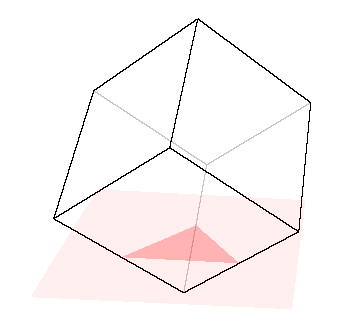Today over lunch I got into a conversation with Vi Hart and Marc ten Bosch about 4D.
At one point I said that with the advent of really low cost virtual reality (the Oculus Rift retails for only $300), it looks like it is finally possible to do something I’ve long wanted to do — reach out and manipulate four dimensional objects with my own hands.
As some of you know, both Vi and Marc are very interested in the fourth dimension, and they’ve both done really interesting things with it.
Even if you get all of the graphics and haptics right, a potential problem when trying to convey a sense of manipulating 4D objects with your hands is that our bodies exist in a 3D world.
As I described my preferred way around this, it turned out that Vi had had pretty much the same idea, which is best described by asking: “How would a two dimensional creature in Flatland manipulate a three dimensional object?”
Assuming the 2D creature can’t escape the plane of Flatland, he/she can still push on whatever part of a 3D object happens to intersect that plane. And this allows some rich possibilities.
For example, a cube passing through Flatland will appear to its denizens as a polygon (see the image below). A Flatlander gripping this polygon could squeeze, applying forces entirely within the plane, to force the cube to move upward in the third dimension — or else relax that grip, to allow the cube to fall downward.

Similarly, the part of a 4D object that intersects our 3D world will appear to us as some 3D shape. We can squeeze on this 3D shape — entirely within our own 3D world — to move the 4D shape in four dimensions.
The nice thing about this approach is that everything we do to control the 4D object is done entirely within our own 3D world. This can make the whole thing a lot easier and more intuitive to learn. Especially for little kids, since it’s a good bet they will be able to learn this stuff a lot more easily than we grownups ever could.
This topic might seem arcane, but one day everybody might be sharing an augmented reality view of the world. At that point, being able to directly manipulate four dimensional objects could become a very practical skill.
After all, there’s a lot of room to put things in four dimensions. If we learn our way around 4D, we won’t need to worry about running out of places to put our virtual stuff. 🙂